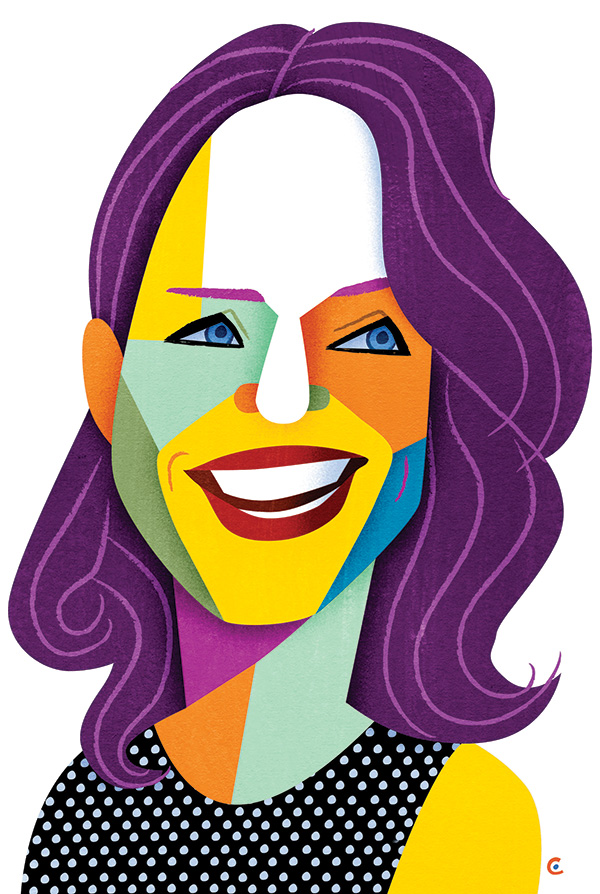Master Class
 (Illustration by David Cowles for the University of Rochester)
(Illustration by David Cowles for the University of Rochester)Genesee Adkins ’99
Vice president and senior director of planning, Northwest Pacific District, WSP USA
On urban living: “I live just adjacent to downtown with my husband and kids. I have a car, which I try not to use. Yesterday, I was lucky enough to ride a bus and a streetcar to get to all my meetings.”
On being a student at Rochester: “It felt like a community that was working in support of one another, and I wanted to take that out into the ‘real’ world. Plus, my name was plastered all over everything—it was on the bus system, it was the school song, and it was on every 20-pack of beer that anybody would drag to any function.”
I work with a team of planners. Most of our clients are public agencies like cities, counties, and transit agencies. The things we’re talking about now are, what are patterns going to settle into in the post-COVID world? And when will we know that they’ve settled? I don’t think we’re through that shift in our commuting behaviors, or in where we are choosing to live, with the flexibility many people now have to work remotely some or much of the time. The traditional patterns in commercial real estate, peak rush hour—that’s going to radically change.
Disruption is hard. There’s never a really good time to shut something down in order to improve it. But we’re in a moment of disruption. How do we want to use this moment? How do we decide we’re not going to go back to exactly how things were? That we’re going to address climate change, to ameliorate inequity by better serving people who have less privilege and less opportunity?
There’s a segment of the population that finds the idea of urban, walkable communities disturbing. I saw this when I started my career in Washington, DC, working for the American Public Transportation Association. That’s when I really had my eyes open. Now when folks say to me, “I’m never going to ride the bus,” I’ll say, “that’s fine. You know, my dad’s a plumber. He can’t take the bus to work. He’s got to drive in this truck. But my kids and me, we can take the bus and the train. We like it better. And then we get out of the plumber’s way. This is a win-win. Everybody benefits when we all have more mobility and more options.
The pandemic has also created some unexpected opportunities. In Seattle last year we had to close a major bridge, on the busiest highway, because it was starting to fail. Pre-COVID, that would have been a disaster. But we were about a month into the pandemic. It was inconvenient and difficult, but it pushed agencies to rise to the challenge by offering more foot-ferry service, to make sure the connections for bicycling are better.
We’re excited about federal progress on infrastructure. But we’re interested in seeing whether the administration will be asking, how is your project going to benefit essential workers, or people who are transit dependent? These are often the people who have saved us in the pandemic but haven’t always been the best served in planning projects.
If we only listen to folks who are able to volunteer and be the squeaky wheel, we’ll continue to propagate disproportionate benefits and services. So government agencies and the people who support them have to think harder about what we’re not seeing or anticipating—for example, the people less likely to make public meetings or to call the city for help, or the people for whom a project is causing unintended harm.
The good news is we’re developing tools across the country to anticipate and address inequities. We’re having a good conversation here about community-informed budgeting—about how resources we all pay to support our city flow back to the people in our city. The Seattle city government also has the Race and Social Justice Initiative, which been a model for other cities on how to combat structural racism.
As for whether people will move toward or away from cities postpandemic, I think it will be all of the above. In Seattle, we’ve seen people who have left the city since the pandemic. But a lot of younger people want a vibrant, urban lifestyle. I am desperately curious to see where we are a year from now, five years from now, and 10 years from now.

